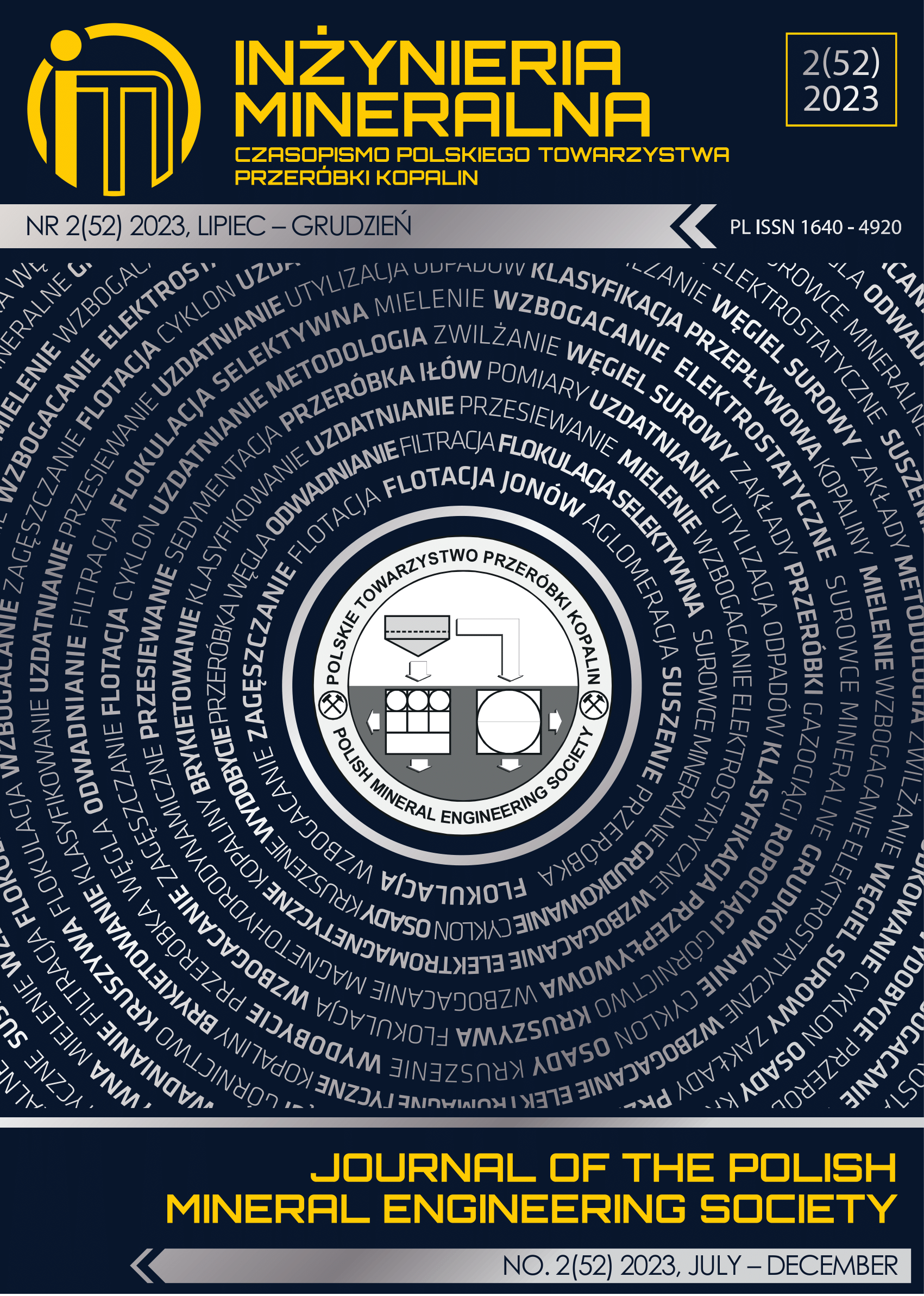Statistical Analysis of Selected Coal Charateristics and Toxic Compounds for FGX Air-Vibrating Separation
Abstract
Dry beneficiation methods were popular in the first part of the 20th century. In the 1930s, before World War II, dry separators were
used more commonly in the United States. Currently, this method is very popular in China, the United States, India, Russia and other
places where its implementation is possible. In Poland, by contrast, dry separation still remains uncommon. However, during the last 30
years, dry separators have started to be more commonly used in coal beneficiation. One example of this type of separator might be the
FGX air-vibrating separator. This type of separator uses air suspension to separate heavier particles (tailings) from lighter coal grains.
The process of dry separation may depend on various parameters, e.g. particle size fraction, air supply, feed parameters, etc.. This paper
describes the mathematical model which shows the scope for using this separation method for coal beneficiation. Mathematical models
are based on dependencies between calorific value and ash content in the samples tested as well as relations between arsenic, thallium,
mercury, lead and other coal characteristics. The latter parameters are of vital importance as Polish emission standards do not have any
limits for the elements mentioned above (arsenic, thallium, mercury and lead).
Copyright (c) 2023 Waldemar MIJAŁ,Tomasz NIEDOBA,Daria POLEK,Ireneusz BAIC,Wiesław BLASCHKE

This work is licensed under a Creative Commons Attribution-ShareAlike 4.0 International License.
This journal permits and encourages authors to post items submitted to the journal on personal websites or institutional repositories both prior to and after publication, while providing bibliographic details that credit, if applicable, its publication in this journal.







.png)
